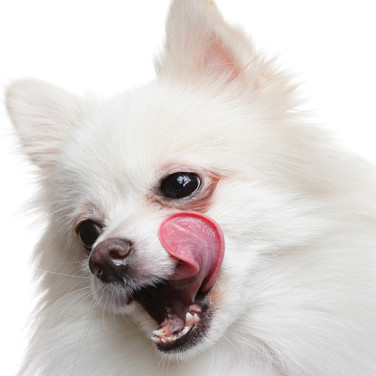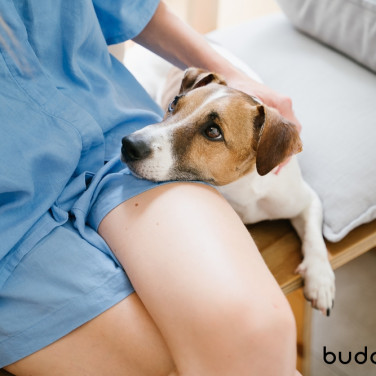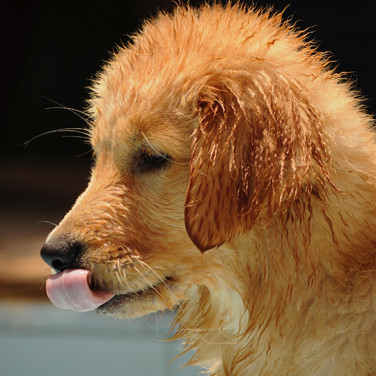ARTICLE
What Age to Start Leash Training a Puppy - Tips for Lead and Harness T…
페이지 정보
본문


Overview on how to leash train your puppy
Leash training is essential for ensuring the safety and well-being of your puppy as they grow. It's important to start leash training early, as it can prevent behavior problems and establish a positive relationship between you and your puppy. Properly trained puppies are more likely to be well-behaved and enjoyable companions later in adulthood. Moreover, leash training teaches the puppy to walk calmly and stay by your side, this can prevent them from getting lost or running into any danger.
Puppies can start leash training as early as 8-10 weeks old when they are fully vaccinated. Puppies at this age are more receptive to new experiences and training rather than waiting until later in adulthood. They are still in their critical socialization period, and it's the best time to expose them to new things, including leash training. Additionally, puppies at this age have not developed any bad habits yet, making it easier to train them. As they grow older, they may become more set in their ways, making it more difficult to teach them new and desirable behavior.

How to collar train a dog
Before you begin to leash train your puppy, you will need to properly collar train your puppy first. Collar training is important to ensure your puppy is comfortable wearing a collar and that the collar fits properly when you attach the leash. Choose a collar that fits snugly around your puppy's neck, but not too tight. Put the collar on your puppy for short periods of time at first, gradually increasing the amount of time they wear it. Provide positive reinforcement and treats while they are wearing the collar. Avoid leaving the collar on your puppy when they are unsupervised. Keep an eye out for any signs of discomfort or irritation, and adjust the collar accordingly.
The 4 types of collars for training:
-
Flat Collars:
The most common type of collar, flat collars are simple and easy to use, making them a popular choice for puppies. They are typically made of nylon or leather, and they have a buckle or snap closure. They are available in a variety of colors and styles, and they are often used with ID tags and other leash attachments.

-
Martingale Collars:
Martingale collars are designed to prevent a dog from slipping out of the collar, making them a good choice for puppies who are prone to slipping out of collars. They have a limited-slip mechanism that tightens the collar when the puppy pulls, preventing them from slipping out of the collar.
-
Head Collars:
Headcollars, also known as head halters, are designed to control a dog's head and prevent them from pulling. They are similar in design to a horse halter, with a noseband that wraps around the dog's muzzle and a strap that goes around the back of the head. They are a good choice for puppies who are strong pullers, but they may take some time to acclimate to wearing one.
-
Harness Collars:
Harness collars are designed to distribute pressure more evenly over the chest and shoulders, reducing the risk of injury. They are a good choice for puppies who are prone to pulling, and they are also a good choice for puppies who are prone to neck or trachea injuries. They come in a variety of styles, including front-clip and back-clip designs.
Frequently asked questions on collar training a puppy:
-
How do I properly fit a collar on my puppy?
Measure your puppy's neck and allow room for 2 fingers to fit between the collar and the neck. Leather collars will stretch over time and nylon collars won't, take into consideration the different types of collar material and choose one best for your pet. It is a good idea to check the collar regularly and adjust as needed while training your puppy.
-
How long should I leave the collar on my puppy?
Start with short periods of time (10-15 minutes) and gradually increase the amount of time they wear the collar from there. Avoid leaving the collar on your puppy when they are unsupervised and keep an eye out for any signs of discomfort.

How to leash train a puppy?
Leash training is the next step in preparing your puppy for walks. Using a regular collar may encourage your puppy to pull, as pressure is applied to the neck when they pull, instead of the chest and shoulders. Therefore, it is recommended to use a front-clip harness, which attaches the leash to the front of the harness, for training to help prevent pulling. Start leash training in a quiet and low-distraction area. When your puppy pulls on the leash, stop walking and wait for them to stop pulling. Once they stop pulling, praise and reward them with a treat. Gradually increase the difficulty of the training by walking in more stimulating areas.
Frequently asked questions on leash training
-
How do I prevent my puppy from pulling on the leash?
The use of front-clip harnesses and gentle training methods that focus on positive reinforcement and redirecting the puppy's attention can help prevent pulling. Teaching the puppy the command "heel" and rewarding them when they walk beside you can also be effective in preventing pulling. Ultimately, consistency and patience are key when training a puppy, in the beginning, to prevent your puppy from pulling on the leash.
-
How long does it take to properly leash train a puppy?
The length of time it takes to properly leash train a puppy can vary depending on the individual puppy and if any, their prior training experiences. Some puppies may take a few weeks to fully understand the concept of leash walking, while others may take at most several months.
-
What type of leash should I use when leash training my puppy?
The type of leash you use when leash training your puppy can depend on the individual puppy and their needs. A standard 6-foot leather or nylon leash is a good choice for most puppies. Retractable leashes, while convenient, may not be the best choice for leash training, as they can be difficult to control and can teach puppies to pull.
How to lead train a puppy
Lead training is a form of dog walking that ensures your puppy is well-behaved and always walking by your side. You can begin lead training or loose lead walking by getting your puppy used to the lead by allowing them to sniff and explore it while it's lying on the ground. Once your puppy is comfortable with the lead, attach it to their collar and begin by having them face the same direction as you on the opposite side of the hand with the lead and treats in the other hand. Whichever position you prefer your dog to stay in at rest, simply switch hands accordingly before beginning training. It is ideal to start lead training indoors where there aren’t many distractions for your puppy to give attention to.
You are going to begin step by step by first rewarding your dog for staying still by your side and begin using commands such as “let’s go” and “heel” to signal when to move and when to stop and receive their reward for complying. Puppies have short attention spans and are naturally curious so it is important to be patient in the beginning and let your puppy figure out what exactly you want with each command and lead walking. Gradually increase the number of steps you take before rewarding as your puppy gets more familiar with your commands. Once you believe your puppy has begun to master this reinforcement, you can begin training outdoors and eventually in a busier setting. This can take anywhere from a few weeks to a few months for your puppy to master, so remember to be patient with them!
Frequently asked questions on lead training:
-
How do I stop my puppy from pulling on the lead?
When your puppy begins to pull on the lead, you can use food and treats to grab their attention and get them to come back beside you. You can also simply stop walking and wait for them to stop to notice you and come back. Once they stop pulling and close their distance back to you, praise and reward them with a treat. As your puppy gets more accustomed to the distance kept between you and your dog while walking with the lead, you can progress training by walking in more busy areas to increase their discipline in sticking to your side. Simultaneously, increase the distance walked between each reward as well.
-
How do I get my puppy to walk calmly on the lead?
Be consistent in your training and avoid jerking or pulling on the lead. Remember to be patient, as it may take some time for your puppy to learn to walk calmly on the lead.
How to harness train a puppy
Finally, harness training is a great alternative to collar training for puppies. Harnesses distribute pressure more evenly over the chest and shoulders, reducing the risk of injury. Choose a harness that fits snugly around your puppy's chest and shoulders. Put the harness on your puppy for short periods of time at first, gradually increasing the duration of how long they wear it. Provide positive reinforcement and treats while they are wearing the harness. Practice walking with your puppy on a lead while they are wearing the harness, using the same techniques as leash training.

Frequently asked questions on harness training:
-
How do I properly fit a harness on my puppy?
Proper fit is essential for comfort and safety when using a harness. Measure your puppy's chest and shoulders to ensure the right size is chosen. The harness should be snug but not tight, leaving room for two fingers to fit between the harness and the puppy's skin. Check and adjust the straps according to the puppy's comfort regularly, making sure it's not too loose or too tight.
-
How do I train my puppy to walk on a harness?
Start by introducing the harness to your puppy while they are in a relaxed state, let them sniff and investigate it. Put the harness on your puppy for short periods of time at first, gradually increasing the amount of time they wear it. Use positive reinforcement and treats to encourage your puppy to walk on the harness. Gradually increase the difficulty of the training by walking in more distracting areas until they have mastered wearing the harness.
-
How do I stop my puppy from pulling on the harness?
Using a front-clip harness, which attaches the leash to the front of the harness, can help prevent pulling. When your puppy pulls on the leash, stop walking and wait for them to stop pulling. Once they stop pulling, praise and reward them with a treat. Gradually increase the difficulty of the training by walking in more distracting areas. Consistency is key when training a puppy, be patient but persistent.

Conclusion on collar, leash, and harness training a puppy
In conclusion, lead, leash, collar, and harness training are essential for ensuring the safety and well-being of your puppy. Proper training at this stage of their life will benefit them greatly in adulthood. Leash training a puppy will allow you to safely take your dog out for walks and other outdoor activities. A well-trained puppy on a leash can enjoy the pleasure and leisure of walks to the fullest. Leash training also teaches your puppy to walk calmly and stay by your side, which can avoid many accidents and prevent them from getting lost. Additionally, leash training can prevent behavior problems from developing, such as pulling, barking, or biting. It allows you to stay in control of your puppy's movements and behavior while maintaining a positive relationship.
Read more on the Buddydoc blog page!

Buddydoc provides a weekly updated blog to keep you informed on the latest and best ways to prepare and take care of your pet all year round. Check out more articles you may be interested in!












